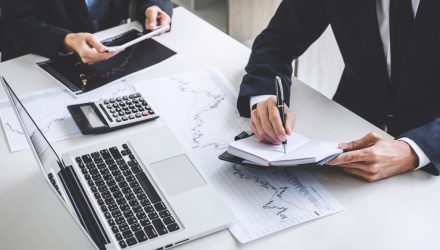Strategas Asset Management announced today the launch of two new actively managed ETFs on the NYSE: the Strategas Macro Thematic Opportunities ETF (NYSE Arca: SAMT), a rotating thematic fund that invests in three to five macro themes at any given time, and the Strategas Global Policy Opportunities ETF (NYSE Arca: SAGP), a global equity fund focused on public policy initiatives at the U.S. federal government level viewed as having the greatest potential positive impact on corporate profits.
Nicholas Bohnsack, CEO of Strategas and portfolio manager with both funds, provided some insights into the firm’s research-driven approach, the benefits of investing in multiple themes at once, and how the firm is using political policy to invest while being apolitical.
ETF Trends: What makes now the right time to launch SAMT and SAGP?
Nicholas Bohnsack: We started as a macro research firm about 16 years ago in 2006, so our focus has been on this topic both as a firm for 15-plus years and as a team for 20. Macro is a pretty low barrier to entry. So, we’re focused on the investible conclusion to the macro view we have, and our clients have asked us to invest in those views. So, in 2014 we launched an asset management subsidiary. All the assets we’ve managed have been in SMAs, unit trusts, and ’40 Act Funds. But once we saw the investment landscape move towards ETFs, it was a natural move.
ETF Trends: What are the core benefits to investing in multiple themes within one fund?
Nicholas Bohnsack: What strikes us is that a lot of macro thematic strategies in the market are focused on only one theme, so for investors, they’ve got to be right on the theme, and got to be right on the time. So, our approach, which is research-driven, is to look at thematic momentum. We’ve got a basket of themes that are always present in our work. We’re focused on what the catalyst is going to be that brings that thematic momentum. And since we actively manage the portfolio, we can invest in three, four, or five of them. We’re not beholden to a particular theme.
ETF Trends: How does the SAMT team choose which themes to invest in at any given time?
Nicholas Bohnsack: That is what we’ve been doing for 15 years. Our process is threefold: We have a research process that recognizes broad macro themes, then we find things that are more durable, then find things that are more long-term.
As we develop a theme, we get into the weeds of what are the characteristics of that theme. Inflation is a good example. When you look at the characteristics of companies that performed well during the last high inflationary period, many of those companies don’t exist today, or don’t exist in the same state. But many of the characteristics that made them do well in that environment exist in the market today. We’re trying to find elements of the theme, not necessarily the company.
ETF Trends: What are some of the unique benefits and challenges investing in lobbying efforts with SAGP?
Nicholas Bohnsack: The benefits is so many of the products available on political theme are focused on the politics. Our framework is apolitical; we don’t care what the composition of government is, or which party is in power. It’s about cutting through political noise and looking at companies or industries that can benefit from policy outcomes.
I’m always surprised when people say that they hope that politics will be less of the investment equation, and my experience is that politics’ part of the equation is increasing. So, we want to cut out the part we think doesn’t matter and focus on the part that does.
ETF Trends: What are the long-term goals for these two funds?
Nicholas Bohnsack: The macro thematic strategy is one we feel comfortable running because it improves our research process. I hope over time more clients will see the convenience provided by pulling this process together in a single product, and those goals are similar for our policy strategy as well. We’re sticking to our knitting and doing what we’ve been doing best for the better part of 15 years.
For more news, information, and strategy, visit ETF Trends.
